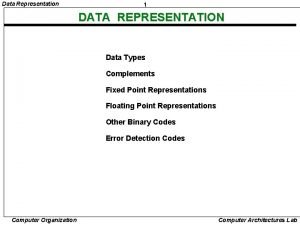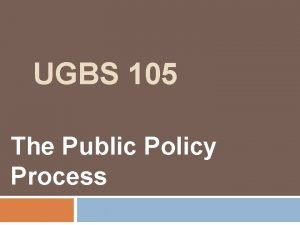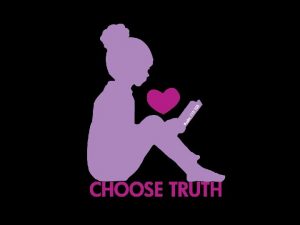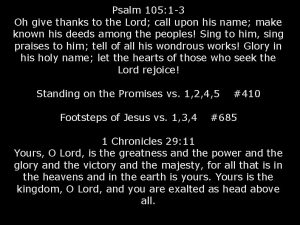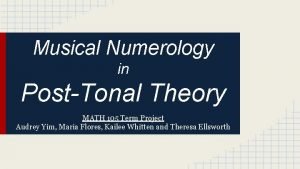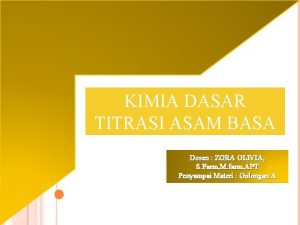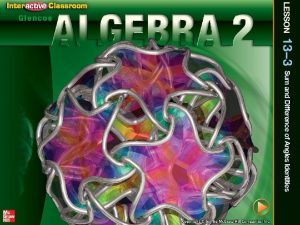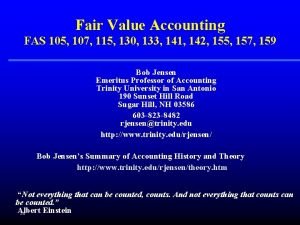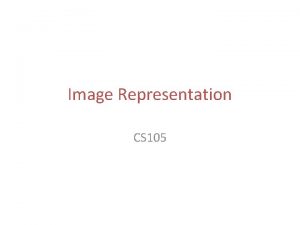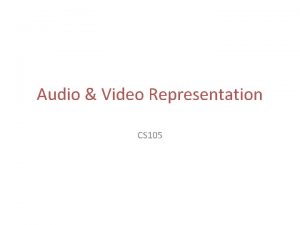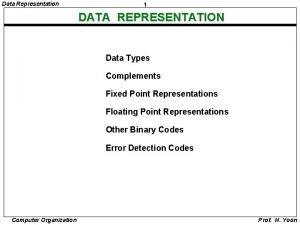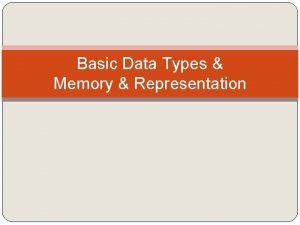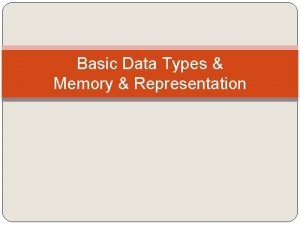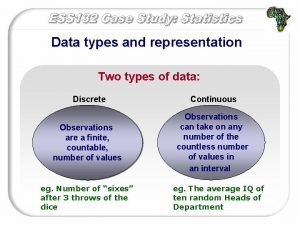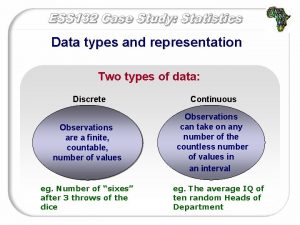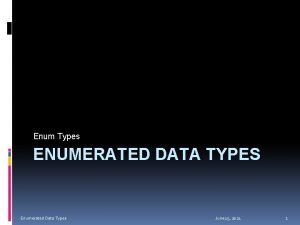Data Representation CS 105 Data Representation Types of












- Slides: 12

Data Representation CS 105

Data Representation • Types of data: – Numbers – Text – Audio – Images & Graphics – Video

Representing Text • Document: Paragraphs, sentences, words – All made up of characters • English language has 26 letters – 52 if you consider upper and lower case – Punctuation characters – Space • Character sets: ASCII

ASCII Character Set • 256 characters – 8 bits = 1 byte • ASCII: Character a --> Dec: 97 --> Binary: 01100001

Recap: Some terminology • Up to this point we have been talking about data in either bits or bytes. – 1 byte = 8 bits • While this is the correct way to talk about data, sometimes it is a bit inefficient. • Therefore, we use prefixes to given an order of magnitude. – Much the same way we do with the metric system. • The following is a list of the common terms. – – – Kilobyte (KB) = 103 = 1000 bytes Megabyte (MB) = 106 = 1 million bytes Gigabyte (GB) = 109 = 1 billion bytes Terabyte (TB) = 1012 = 1 trillion bytes Petabyte (PB) 1015 = 1 quadrillion bytes 1 gigabyte of storage 20 years ago!

Unicode Character Set • Why Unicode? – 216: 65000 characters – ASCII is a subset of Unicode

Data Compression • Why compress data? – Storage, transmission within PC/over network • What is data compression? – Reducing physical size of information blocks – Compression ratio • Tells us how much compression occurs. Number between 0 and 1 – Lossless versus lossy compression • Images, sound files, videos • Database of names, numbers

Text Compression • Examine three types of text compression: – Keyword encoding – Run-length encoding – Huffman encoding

Keyword Encoding • Frequently used words replaced by a single character --> Reversible Word Symbol as ^ the ~ and + that $ must & well % these # Drawbacks: The Reduced human from body 352 isto composed 317 of many independent systems, Compression ratio: 317/352 such as ^=the 0. 9 thecirculatory • system, Symbols~used respiratory system, for encoding thesystem, respiratory must not + ~appear system, in the text and the reproductive system. Is this efficient? system. Not only. Not & all only systems must • work & ‘the’ work needs independently, to bebut represented by different all‘The’ systems independently, they & interact but they symbols must and cooperate interact and ^ %. cooperate Overall health as well. is a • Would not gain anything by encoding ‘a’ and ‘I’ Overall function health offrequently ~ %isbeing a function of separate of the systems, well short being • Most used words are often of separate ^% ^ how # systems, separate as systems well aswork howin these separate systems work in concert.

Run-Length Encoding • Also known as recurrence coding • Encoding a single character that is repeated over and over again – For example: replacing ‘AAAAAAA’ with a ‘*’ : *A 7 • Drawbacks? • Uses: DNA sequences, simple images • Lossy or lossless compression?

Huffman Encoding • Variable bit lengths to represent characters: – a --> Binary 01100001 – 8 bits – Why would character X take up as many bits as a? • Represent it using 5 bits instead • Saving space: – Frequently appearing characters are represented by shorter bit lengths

Huffman Encoding Huffman Code Character 00 A 01 E 100 L 110 O 111 R 1010 B 1011 D DOORBELL D= 1011 O= 110 O=110… 1011 110 111 10100100 If we used fixed size bit string: 64 bits With Huffman encoding: 25 bits Compression ratio: 25/64 = 0. 39
